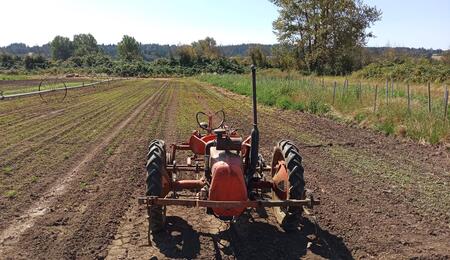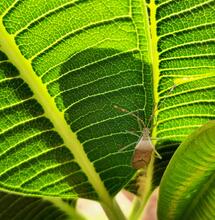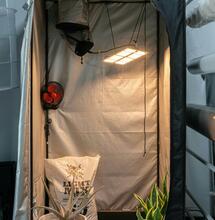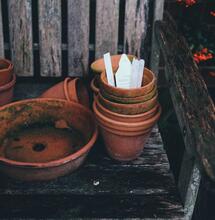CBD-rich Cannabis – Stiff Cannabis Competiton

Stiff competition continues to mount for hobby cannabis growers that want to grow for profit and growers who are selling their flowers. The price of cannabis is dropping and will continue the downward spiral until a market-to-production equilibrium is reached. Professional, well-educated farmers that own farms, tractors, farm implements, etc. are entering the legal CBD-rich cannabis marketplace to compete with established cannabis (THC and CBD) growers
Stiff competition continues to mount for hobby cannabis growers that want to grow for profit and growers who are selling their flowers. The price of cannabis is dropping and will continue the downward spiral until a market-to-production equilibrium is reached. Professional, well-educated farmers that own farms, tractors, farm implements, etc. are entering the legal CBD-rich cannabis marketplace to compete with established cannabis (THC and CBD) growers.
These farmers are serious about profit and are set up to grow tonnes of CBD-rich cannabis in large sunlit fields. Farms are mechanized and do not rely on intensive labor. For example, I normally count 10 or more people working a hecacre of cannabis. When I tour a well-run CBD-rich farm, one person can easily manage a one hectacre farm. This fact alone will give the profesional farmer a 10-fold advantage!
Crop of the CBD-rich variety Cherry Wine about midseason.
Many professional farmers that plant large fields are chosing to grow autoflowering cannabis rather than ¨regular¨ AKA long-season cannabis plants. Autoflowering cannabis is popular in Europe and becoming more popular in other parts of the world, especially among farmers who grow hectares. ¨Autoflower¨ is a term that is used by clandestine cannabis cultivators that has been employed so often that it is now commonplace. In botanical terms, ¨day(light)-neutral¨ is the correct term to describe autoflowering cannabis. If you have grown strawbery plants you purchased at the nursery, you are probably familiar with daylight-neutral plants as opposed to everbearing strawberry plants. Daylight-neutral varieties, like autoflowering cannabis, all come ripe at the same time. These varieties are planted for agricultural production. Everbearing strawvberry plants (similar to ¨regular¨ cannabis) are most often grown by home gardeners.
Cannabis farmers today use tractors and other farm implements that do the work of many laborers.
Maturity in day-neutral plants is based on the cumulative number of ¨days to maturity¨ (DTM). Days to maturity is defined as, the time from germination (when seed is first moistened) unil the time the plant completes it´s flowering cycle, harvest.
Days to maturity is also influenced by the amount of sunlight plants receive. For example, sunlight is brighter during summer months than winter months because the sun is closer to the earth during the summer. Consequently a plant that is advertized to come ripe 75 days after germination, may reach maturity 10-15 days later during fall, winter and spring months when sunlight is less intense. Plants grown in the winter will also be somewhat smaller and produce less overall harvest mass. There is a direct correlation between harvest weight and number of solar radiation units. A day-neutral cannabis plant that receives a specific amount of solar radiation units flowers at the the same time.
Drying an acre field of cannabis takes an entire greenhouse. Ben and Steve Rogers grew a test acre of CBD-rich cannabis to learn the ABCs of growing, harvesting and processing a new crop on their farm
Autoflower farmers can follow the planting and harvest agenda below depending upon climate and freeze dates. Plants may be smaller, but four harvests annually are posible.
Plant in February, harvest in April
Plant in April, harvest in June
Plant in August, harvest in October
Plant in November, harvest in January
Photoperiodic sensative (photoperiod) cannabis plants, also known as ¨regular¨cannabis, initiates flowering when plants receive about 12 hours of darkness. These plants have a ¨trigger¨ to flower in the autumn, when days grow short. Photoperiod cannabis planted the first of May comes ripe in September through November, depending upon the hours of darkness received. Typically regular cannabis plants are in the ground 5-7 months before harvest. Such plants can grow very, very big and produce 5 kg. or more in dried manicured flowers. But, the harvest date is unknown and subject to hours of darkness and to a lesser extent, number of solar radiation units. Furthermore, many hours of of intensive labor are required.
Regular (photoperiod) cannabis plants are great for backyard gardeners and some farmers because they offer the best value; harvest timing and replanting are not as critical as when growing consecutive crops of cannabis in large fields. And, often the entire cannabis plant does not ripen completely at the same time. Flowers on the outside of the plant receive more sunlight and become ripe first. If climate permits, growers harvest the outer buds first and let the lower buds fully mature before harvesting a week or two later. Some varieties of regular cannabis are able to be harvested up to three times. Staggering the harvest over time may increase yield up to 40 percent. Labor-intensive home gardens take advantage of these desirable qualities.
Ben Rogers from Oregon stands proudly in a field of fast-growig CBD-rich cannabis.
In general, professional farmers find regular cannabis plants available today not suitable for large-scale production. Regular cannabis plants and plants developed for home growers lack strong stems to support large flowers and most often lack resistance to diseases and pests. And, regular, long-season cannabis plants are difficult to harvest mechanically. The cost of labor is one of the most important considerations for farmers. Labor when left unchecked, is the biggest single expense to grow cannabis.
Greenhouse and indoor growers can control the photoperiod in the controlled cultivation área. Indoor growers simply change the light timer to give plants the desired 12 hours of darkness during a 24-hour day to trigger flowering. Flowers are ripe and ready to harvest in 7-12 weeks. Greenhouse growers cover the entire greenhouse with an opaque covering to ¨black it out¨ and create 12 consecutive hours of darkness. But, such tactics are cost-prohivitive to implement outdoors when growing large fields.
Plants were about 1.5 meters high at harvest. If plants grew any larger, they would be much more difficult to dry and process.
Enter day-neutral cannabis. Many companies are developing new, acclimated, functional varieties of day-neutral cannabis. Currently, most of these companies are developing outstanding CBD-rich varieties because they can grow it legally. They all have their sights set on growing THC-rich cannabis when it becomes legal.
Cannabis seed prices are also plummeting. Companies such as https://oregoncbdseeds.com/ and Medicinal Botanical Seeds, LLC, Ontario, Oregon, are producing great seeds that sell for about $1.00 USD each, a far cry from the $5-10 USD prices growers are paying today. The profesional cannabis ¨breeders¨ and personnel heading these companies have degrees in biology, botany and genetics.
Gone are the days of making a great living growing cannabis in a small greenhouse or indoor grow room. Gone are the days of spending and countless hours and resources to produce cannabis. Growers can spend the extra time and money, but it will no longer be wildly profitable. For example, growers in Colombia, South America are producing finished dry flowers for about $0.05 USD per gram. Most farms in North America produce the same gram of cannabis for about $1.00. This gives Colombian farmers a 20-fold advantage.
Dr. Clinton Shock (Medical Botanical Seeds, Ontario, Oregon) and Ben Rogers standing in a field of CBD-rich cannabis.
If you want to make a good living growing and selling CBD-rich and THC-rich cannabis, base your decisions on solid scientific princlples and lower cultivation expenses across the board. Growers who ignore current market trends should consider cannabis cultivation a hobby.
Jorge Cervantes is author of the Cannabis Encyclopedia (596 pages, 2,000+ color images, large A4 format) and Marijuana Horticulture (AKA the Bible). Booth books are available at all amazon retailers worldwide. The Cannabis Encyclopedia has an excellent chapter on water. Contact Jorge at www.marijuanagrowing.com.



.png)